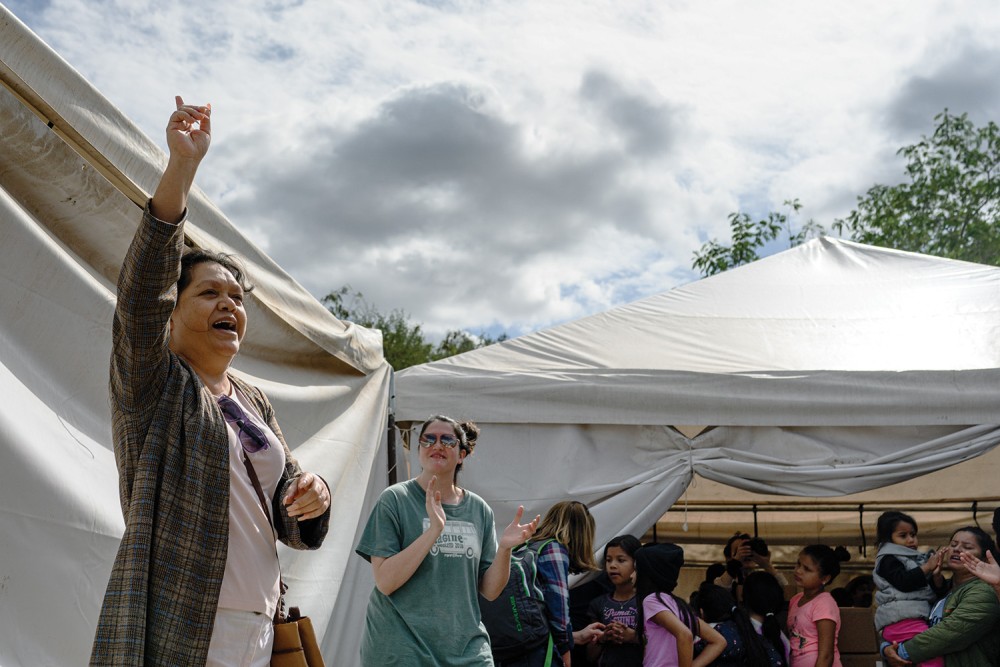Latino churches are social service hubs
Yet their extensive efforts go largely unseen outside their communities.

Eunice Moya (left) of Iglesia Misionera Cristo Vive, in McAllen, Texas (photo by Anastasia Waltschew)
The 5 p.m. mass on a recent sunday found Isela Castro selling beef nachos at Our Lady of Guadalupe, a Jesuit parish in San Diego. Castro cooked the nachos in the parish kitchen while her husband, niece, and nephew ferried plates outside to hungry congregants. All told, the sale raised over $600 to help fund the church’s migrant ministry. Castro is the ministry’s volunteer coordinator—itself a volunteer role—and organized the event to provide reusable water bottles for men staying at the shelter.
This kind of food sale isn’t unusual for the historic parish, which is located in San Diego’s Barrio Logan neighborhood, a locus of Mexican-American culture. “We have food all the time: tamales, champurrado, pozole, everything,” Castro says. “People want to survive and they want to raise funds, and they cook with their heart.”
Castro grew up in Barrio Logan in the ’80s and ’90s. “It was a different neighborhood in a different time—very dangerous, and scary,” she says. “As a kid I wanted so badly to leave and never come back.” But as an adult, she gravitated toward the church where her grandparents first took her to mass as a child. She was drawn, in part, by Our Lady of Guadalupe’s emphasis on putting faith into action. In addition to the migrant ministry, people can access services from ESL classes to trauma recovery to immigration advocacy at the church. Castro says this community involvement inspires her and other parishioners.




